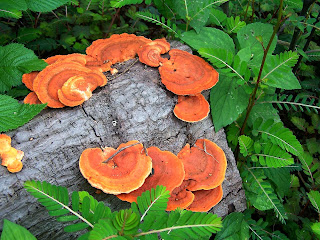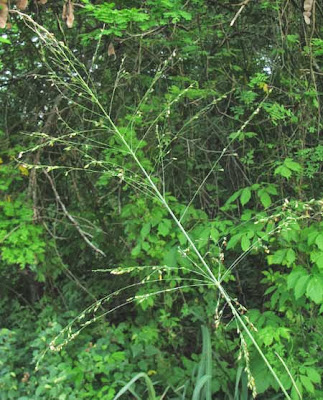" Average precipitation in depth (mm
per year) in Mexico." TRADING ECONOMICS | 300.000 INDICATORS
FROM 196 COUNTRIES. N.p., n.d. Web. 17 Oct. 2013.
<http://www.tradingeconomics.com/mexico/average-precipitation-in-depth-mm-per-year-wb-data.html>.
"10 of the
cutest endangered species: Mexican axolotls | MNN - Mother Nature
Network." Environmental News and Information | MNN - Mother Nature
Network. N.p., n.d. Web. 18 Oct. 2013.
<http://www.mnn.com/earth-matters/animals/photos/10-of-the-cutest-endangered-species/mexican-axolotls>.
"Amanita
caesarea, Caesar's Mushroom." Wildflowers, fungi, wildlife; nature
books; reserves; free guides. N.p., n.d. Web. 18 Oct. 2013.
<http://www.first-nature.com/fungi/amanita-caesarea.php>.
"Beadvine
or Rosary Pea, ABRUS PRECATORIUS." Backyard Nature with Jim Conrad.
N.p., n.d. Web. 18 Oct. 2013.
<http://www.backyardnature.net/yucatan/beadvine.htm>.
"CDF
Galapagos Species Checklists - Pycnoporus sanguineus." CDF Galapagos
Species Checklists. N.p., n.d. Web. 18 Oct. 2013.
<http://checklists.datazone.darwinfoundation.org/true-fungi/basidiomycota/pycnoporus-sanguineus-l-murrill/>.
"Central
American Agouti, DASYPROCTA PUNCTATA." Backyard Nature with Jim Conrad.
N.p., n.d. Web. 18 Oct. 2013. <http://www.backyardnature.net/yucatan/agouti.htm>.
"DATRONIA
CAPERATA." Backyard Nature with Jim Conrad. N.p., n.d. Web. 18 Oct.
2013. <http://www.backyardnature.net/yucatan/mangpoly.htm>.
Decker, Jeffrey.
"ADW: Dasyprocta punctata: INFORMATION." ADW: Home. N.p., n.d.
Web. 18 Oct. 2013.
<http://animaldiversity.ummz.umich.edu/accounts/Dasyprocta_punctata/#economic_importance_positive>.
"Desert
Biomes." Blue Planet Biomes. N.p., n.d. Web. 17 Oct. 2013.
<http://www.blueplanetbiomes.org/desert.htm>.
"Environment
- Mexico City." Stats about all US cities - real estate, relocation
info, crime, house prices, cost of living, races, home value estimator, recent
sales, income, photos, schools, maps, weather, neighborhoods, and more.
N.p., n.d. Web. 18 Oct. 2013. <http://www.city-data.com/world-cities/Mexico-City-Environment.html>.
"Facts
about Pycnoporus sanguineus - Encyclopedia of Life." Encyclopedia of
Life - Animals - Plants - Pictures & Information. N.p., n.d. Web. 18
Oct. 2013. <http://eol.org/pages/1029268/details>.
"Guinea
Grass, PANICUM MAXIMUM." Backyard Nature with Jim Conrad. N.p.,
n.d. Web. 18 Oct. 2013.
<http://www.backyardnature.net/yucatan/guinea-g.htm>.
"Gulf Coast
Toad | Herps of Texas." Herps of Texas. N.p., n.d. Web. 18 Oct.
2013. <http://www.herpsoftexas.org/content/gulf-coast-toad>.
"Gulf Coast
Toad, BUFO VALLICEPS." Backyard Nature with Jim Conrad. N.p., n.d.
Web. 18 Oct. 2013. <http://www.backyardnature.net/mexnat/gulftoad.htm>.
"Mexican
Axolotls, Mexican Axolotl Pictures, Mexican Axolotl Facts - National
Geographic." Animals - Animal Pictures - Wild Animal Facts - Nat Geo
Wild - National Geographic. N.p., n.d. Web. 18 Oct. 2013.
<http://animals.nationalgeographic.com/animals/amphibians/axolotl/>.
"Mexican
Flame-vine, SENECIO CONFUSUS." Backyard Nature with Jim Conrad.
N.p., n.d. Web. 18 Oct. 2013.
<http://www.backyardnature.net/q/flamvin2.htm>.
"Mexican
Unicorn Mantis, PHYLLOVATES CHLOROPHAEA." Backyard Nature with Jim
Conrad. N.p., n.d. Web. 18 Oct. 2013.
<http://www.backyardnature.net/q/unicorn.htm>.
"Mexico Climate, Average Weather, Temperatures,
Rainfall, Sunshine, Humidity, Graphs." Mexico Climate, Average Weather, Temperatures,
Rainfall, Sunshine, Humidity, Graphs. N.p., n.d. Web. 17 Oct. 2013.
<http://www.mexico.climatemps.com/>.
"Mexico's
Climates, Biomes, and Natural Resources | bigolbrack." bigolbrack |
Just another WordPress.com site. N.p., n.d. Web. 17 Oct. 2013.
<http://bigolbrack.wordpress.com/2011/12/01/mexicos-climates-biomes-and-natural-resources/>.
"Physical
map of Mexico." Free World Maps - Physical maps. N.p., n.d. Web. 17
Oct. 2013. <http://www.freeworldmaps.net/northamerica/mexico/map.html>.
"Solitary
Vireo." Backyard Nature with Jim Conrad. N.p., n.d. Web. 18 Oct.
2013. <http://www.backyardnature.net/mexnat/w-m-chch.htm>.
"Turtle
Grass, THALASSIA TESTUDINUM ." Backyard Nature with Jim Conrad.
N.p., n.d. Web. 18 Oct. 2013.
<http://www.backyardnature.net/yucatan/thalassi.htm>.
"Water
Pollution in Mexico | Globerove." Globerove. N.p., n.d. Web. 18
Oct. 2013. <http://globerove.com/mexico/water-pollution-mexico/699>.
"Weather
Averages for Mexico City, Mexico Climate." Weather Averages for Mexico
City, Mexico Climate. N.p., n.d. Web. 18 Oct. 2013.
<http://www.mexico-city.climatemps.com/>.
"West
Mexican Chachalaca - Ortalis poliocephala by Jean-Michel Fenerole :
jefe6349." Les oiseaux. N.p., n.d. Web. 18 Oct. 2013.
<http://www.oiseaux.net/photos/jean-michel.fenerole/west.mexican.chachalaca.1.html>.
"Yucatan
Gray Squirrel, Sciurus yucatanensis." Backyard Nature with Jim Conrad.
N.p., n.d. Web. 18 Oct. 2013.
<http://www.backyardnature.net/yucatan/squ_gray.htm>.
"cf.
COPRINOPSIS LAGOPUS." Backyard Nature with Jim Conrad. N.p., n.d.
Web. 18 Oct. 2013. <http://www.backyardnature.net/yucatan/inky-cap.htm>.
"cf.
Phellinus punctatus." Backyard Nature with Jim Conrad. N.p., n.d.
Web. 18 Oct. 2013. <http://www.backyardnature.net/yucatan/phellinu.htm>.
















